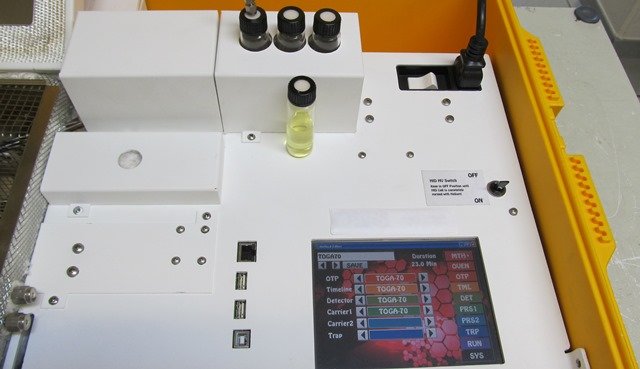Gas-in-Oil Analysis | TOGA-100-GC – Gas-in-Oil Analysis (DGA – dissolved gases) has been successfully used for several years for the diagnosis and monitoring of oil transformers and tap-changers. DGA is considered one of the most powerful methods for assessing the condition of the transformer’s insulation system. Due to the natural ageing of the oil and the insulating materials, cracked gases are formed which are dissolved in the transformer oil. Especially under the influence of thermal or electrical faults. With the DGA analysis slowly developing faults can be detected. The temporal development of the gas concentrations allows a trend analysis.
By comparing the DGA results a characteristic fault gas pattern is determined. For the mobile DGA at the transformer on site, the TOGA 100-GC system delivers reliable and accurate measurements in a very short time. The gaseous decomposition products provide information about the type of fault in the transformer. The TOGA 100-GC system separates all eleven components of the gas to oil analysis in one injection. The TOGA 100-GC follows the ASTM 3612C method for gas analysis with headspace injection. For the laboratory gas chromatograph of the M-Labor series, there is also the option to connect an automatic sampler. The TOGA 100 Portable allows samples to be analyzed directly on site. A small helium tank is sufficient to operate the GC in the field. The column oven in each TOGA 100 GC guarantees a high sample throughput by fast heating and cooling.
The fully integrated TOGA GC systems are small, lightweight and, like all systems, modular. They can be easily upgraded and are easy to maintain. Sample information: This ASTM D3612 C method is used to analyze the eleven most common components.
We offer you advice on the topics:
Gas-in-Oil Analysis | Dissolved Gas Analysis DGA | Transformer oil analysis–



